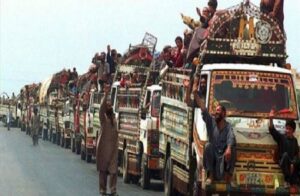NEW YORK (SW): The Afghan conflict has intensified in 2015, resulting in record high levels of civilian casualties and new displacements that are stretching the humanitarian community’s ability to sufficiently meet life-saving needs, the United Nations relief wing has reported.
According to the mid-year review of the Afghanistan humanitarian response, in the first half of 2015 has been shaped by intensification of the conflict resulting in 4,921 civilian casualties, including 1,592 civilian deaths, and a sharp increase in conflict-induced displacement – up some 43 per cent – if compared to the same period in the previous year.
And as military operations in North Waziristan continued and expanded throughout 2015, the anticipated spring return of refugees has not occurred, resulting in a protracted crisis with families indicating they do not expect to be able to return home for two to three years, according to the review, issued by the UN Office for the Coordination of Humanitarian Affairs (OCHA) on Wednesday.
Programmes for Afghans forcibly displaced by the conflict, vulnerable returnees, refugees and malnourished children “are all seriously under-resourced and in some cases have been terminated.”
Specifically, “the first half of 2015 saw an increase in conflict both in terms of frequency and geographic spread, notably in Helmand, Kunduz, Faryab and Nangarhar, while various provinces in Central Region remain highly unstable, generating continuous displacement,” the report said.
“Additionally, provinces that have not been traditionally affected by large-scale displacement have experienced significant forced population movements, including Badakshan, Sar-i-Pul, Baghlan, Takhar and Badghis,” it said.
A significant upsurge in displacement was reported compared to the same period in previous years, largely owing to new conflict which broke out in Kunduz province in the northeast part of Afghanistan in April 2015.
“The total number of displaced is likely even higher due to inaccessibility for assessment teams in areas where internally displaced persons may be present,” according to OCHA.
Finally, “depleting resources remain a critical factor in the humanitarian community’s ability to meet growing life-saving needs.”The humanitarian response plan for Afghanistan had received $195 million or 48 per cent of the $406 million total funding requirement by mid-year, OCHA said
ENDS





